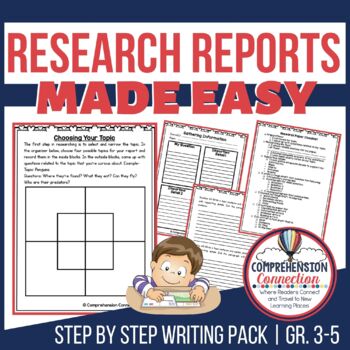Happy Monday, everyone! Today I'd like to share with you an author study project we worked on a couple weeks ago. We were blessed to have author/illustrator Todd Parr visit our building in November, and since his visit, my students have been asking to learn about more authors and/or illustrators. As we near the end of the year, I knew I wanted to fit this in more than just sharing a tidbit or two about some of their favorite authors.
Students were in 5 groups, and each group was given a choice of 4 different authors. I tried to choose authors whose books students would be able to read relatively independently. I did not give authors we already knew a little bit about as options. Once authors were chosen, I worked with my school librarian and visited the public library to get as many books by each author as I could.
We began by researching the author using Wikipedia, each author's website and author interviews on Scholastic.com. One student in each group volunteered to be the recorder and took notes for the group. Authors chosen were: Eric Carle, Doreen Cronin, Laura Numeroff, Peter Reynolds and Leo Lionni.
After learning about the author, students began reading the different books the author had written. They would talk to each other as they were reading and many noticed some similarities or took note of things they learned from their research as they read. These books quickly became popular picks during independent reading time and in our classroom library!
Once we had learned about the author and read many of their works, it was time to plan how to share our learning with the class. Each group had the opportunity to make a presentation in any way they would like, but there had to be at least 1 visual element. They were also encouraged to have a group member share one of their author's books, though this was not required.
Three groups chose to make posters about their author, and two groups were feeling adventurous and decided to try a new app, Adobe Voice. Each group had at least 1 student volunteer to read; in fact, one group had all 4 want to read, so they read two books in total, each reading half of a book. The groups that made posters were each given a piece of poster board and some garage sale sign type cutouts (Dollar Tree). They also downloaded images of the author's books using Google Images to include on their posters.
The final step after projects were complete was to share them with the class. They love to share with one another!
My students loved learning not only about the author their group researched, but they were interested to know what their friends learned as well. One of my students was so excited to learn about Laura Numeroff, she has decided to write her own book in her style during our free writing time.
What types of author or book studies have you done with your students? How to you make these connections with students?

3
Students were in 5 groups, and each group was given a choice of 4 different authors. I tried to choose authors whose books students would be able to read relatively independently. I did not give authors we already knew a little bit about as options. Once authors were chosen, I worked with my school librarian and visited the public library to get as many books by each author as I could.
We began by researching the author using Wikipedia, each author's website and author interviews on Scholastic.com. One student in each group volunteered to be the recorder and took notes for the group. Authors chosen were: Eric Carle, Doreen Cronin, Laura Numeroff, Peter Reynolds and Leo Lionni.
After learning about the author, students began reading the different books the author had written. They would talk to each other as they were reading and many noticed some similarities or took note of things they learned from their research as they read. These books quickly became popular picks during independent reading time and in our classroom library!
Once we had learned about the author and read many of their works, it was time to plan how to share our learning with the class. Each group had the opportunity to make a presentation in any way they would like, but there had to be at least 1 visual element. They were also encouraged to have a group member share one of their author's books, though this was not required.
Three groups chose to make posters about their author, and two groups were feeling adventurous and decided to try a new app, Adobe Voice. Each group had at least 1 student volunteer to read; in fact, one group had all 4 want to read, so they read two books in total, each reading half of a book. The groups that made posters were each given a piece of poster board and some garage sale sign type cutouts (Dollar Tree). They also downloaded images of the author's books using Google Images to include on their posters.
The final step after projects were complete was to share them with the class. They love to share with one another!
This group struggled to find photos on Google Images, so decided to use clipart, which I thought was a kindergarten-appropriate decision!
My students loved learning not only about the author their group researched, but they were interested to know what their friends learned as well. One of my students was so excited to learn about Laura Numeroff, she has decided to write her own book in her style during our free writing time.
What types of author or book studies have you done with your students? How to you make these connections with students?






























